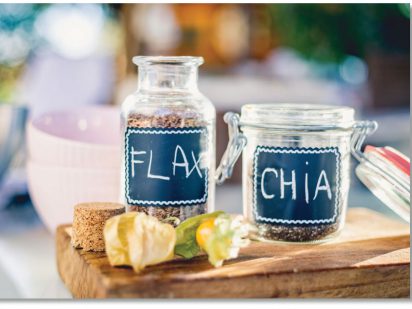By Kayla Benson, RDN, LRD, Clinical Dietitian, Trinity Health
CHIA
Chia seeds have gained popularity over recent years. They come from the plant Salvia hispanica which is native to Mexico and Guatemala. The seeds are very small, and can be white, grey, or black in color.
Chia seeds are rich in omega-3 fatty acids, fiber, protein, and calcium. Two tablespoons of dry seeds contain 140 calories, 5 grams of protein, 10 grams of fiber, and 180 milligrams of calcium. Research has shown that omega-3 fatty acids can have a positive effect on cardiovascular, bone, skin, and mental health. The 10 grams of soluble fiber in chia seeds help slow digestion which aids in lowering cholesterol, stabilizing blood sugars, and promotes satiety. Chia seeds contain all nine essential amino acids making them a complete protein.
These tiny seeds are versatile as they can be added to various recipes and have long shelf life of four to five years. Unlike flax seeds, chia seeds are digested well in their whole form or ground.
FLAX
Flax has been around since 3000 B.C. and originated in southern Europe and Asia. The seeds of the flax plant are flat, with a golden to reddish brown hue. Flax is also known as linseed and can be found whole or ground, roasted, or processed into flaxseed oil. Flaxseed is best absorbed when ground.
Two tablespoons of whole flaxseed contain 110 calories, 4 grams of protein, and 5.5 grams of fiber. They are considered a good source of thiamine, copper, magnesium and phosphorus. Lignans are found in almost every plant; however, flaxseeds are especially rich in them. Lignans are classified as phytoestrogens and research indicates that the high amount found in flaxseed may reduce the risk of certain cancers.
Shelf life of flax depends on the quality of the seed and whether it’s stored whole or ground. If stored properly, flax can last up to two years. It is best to store according to brand-specific recommendations.


